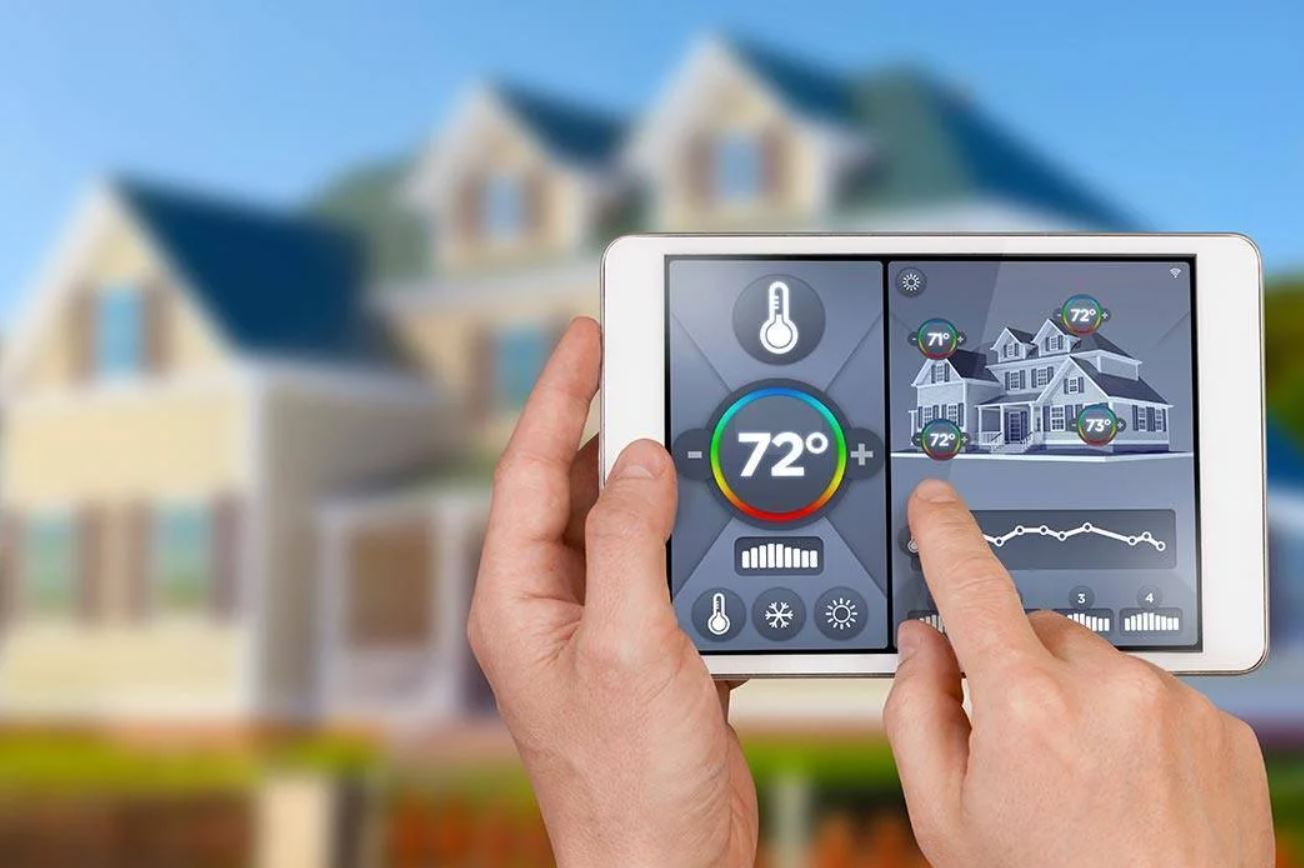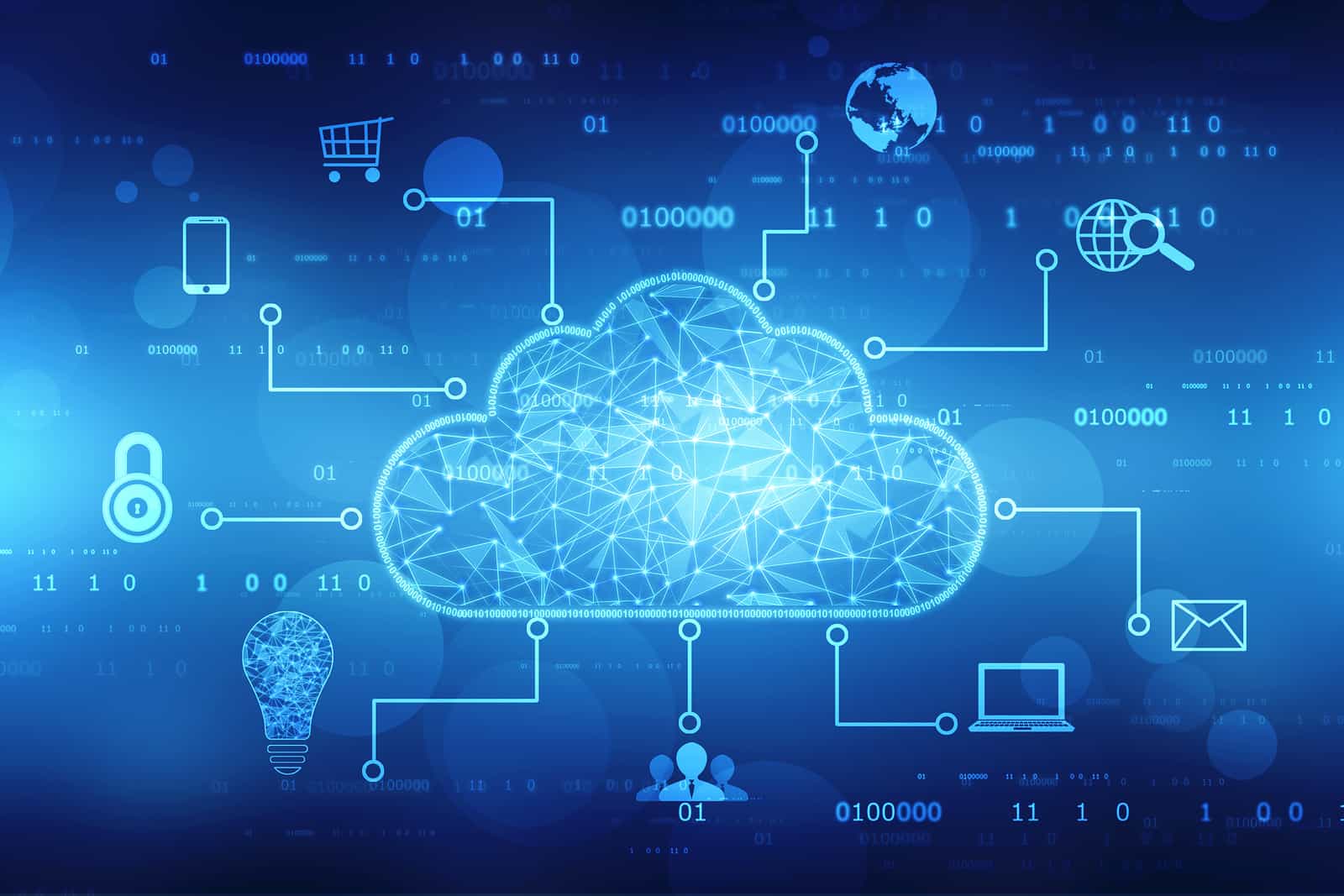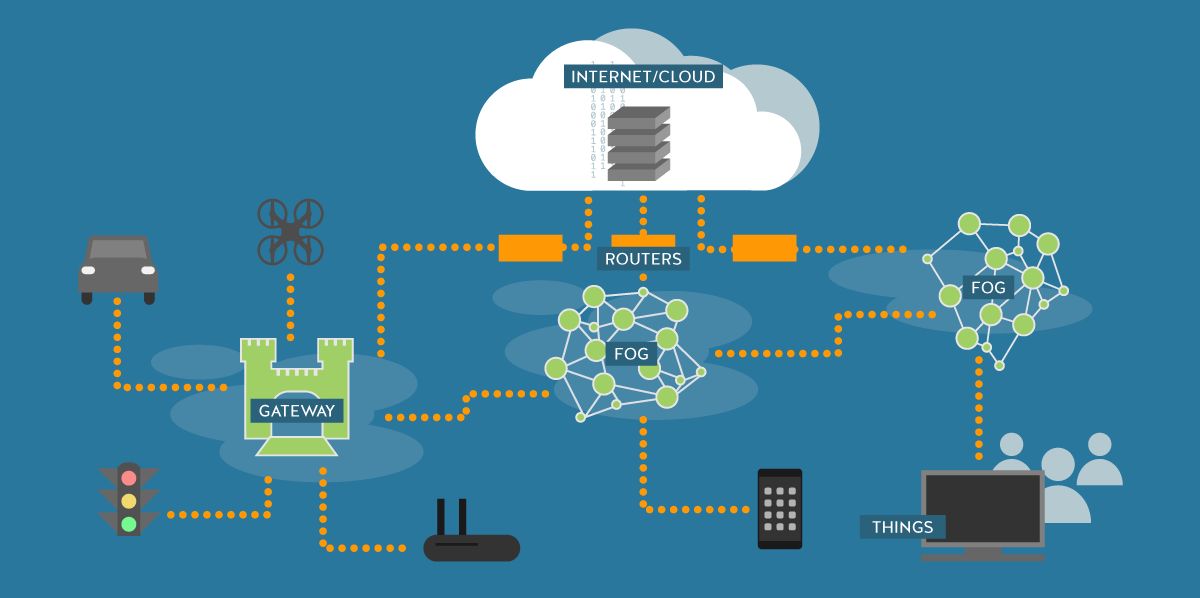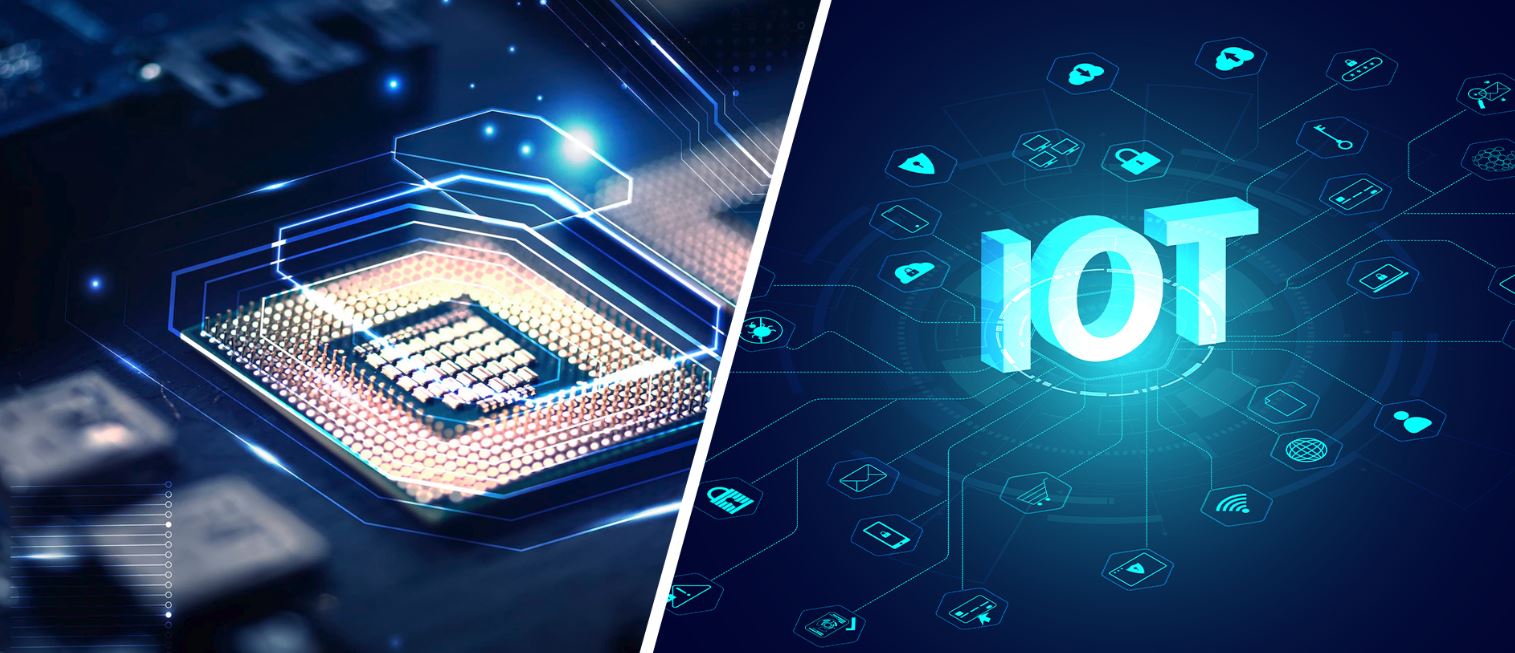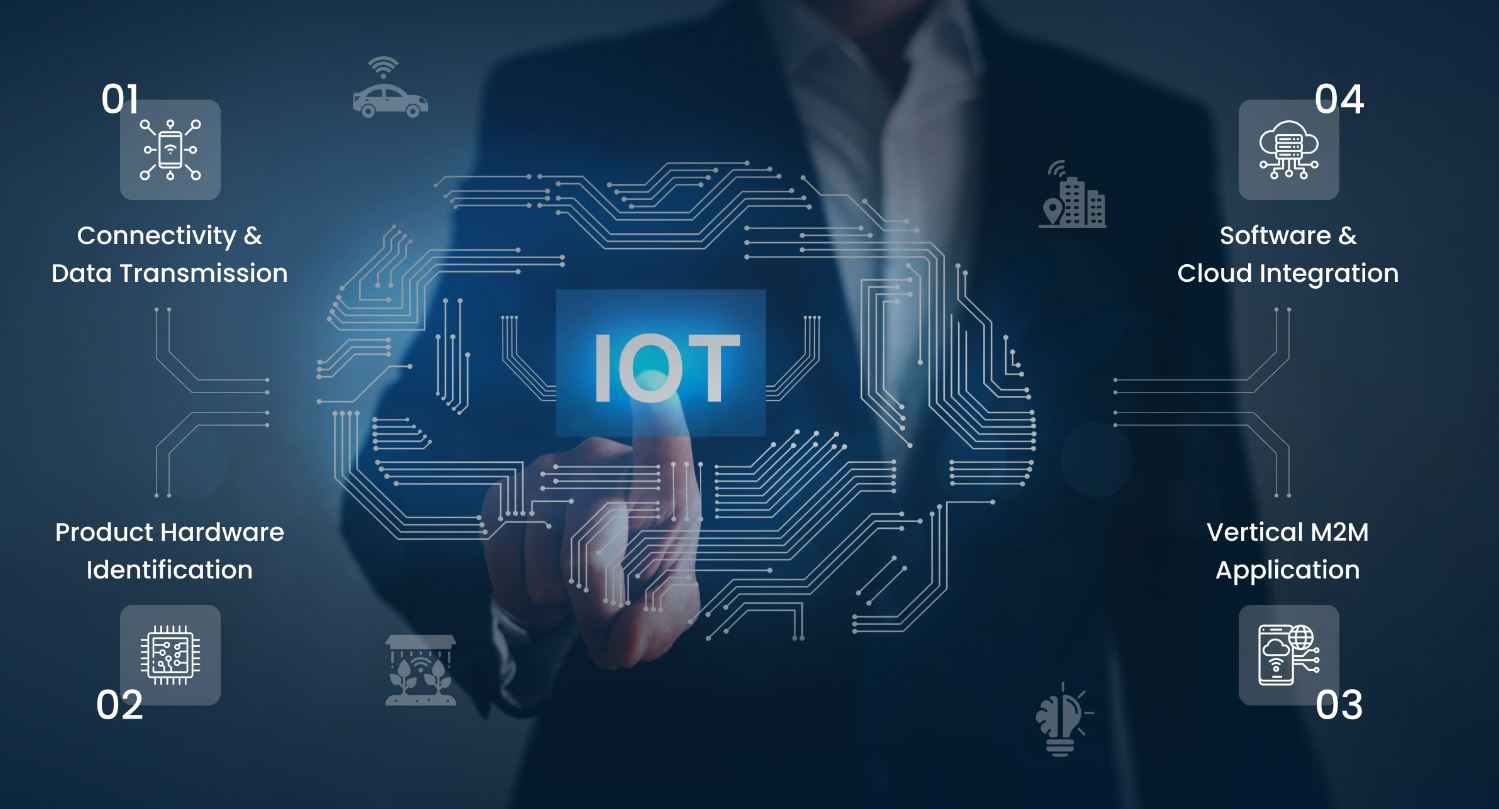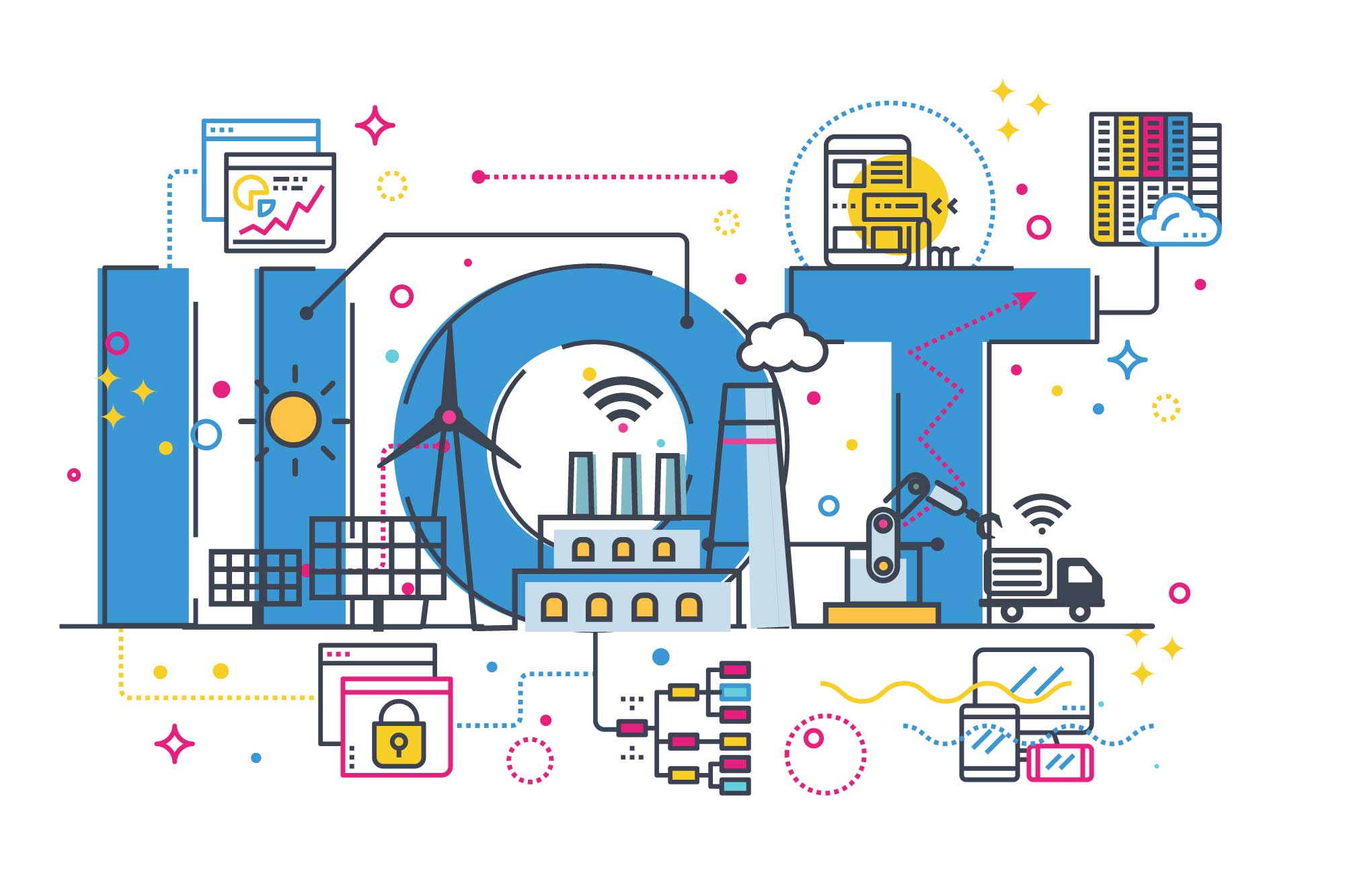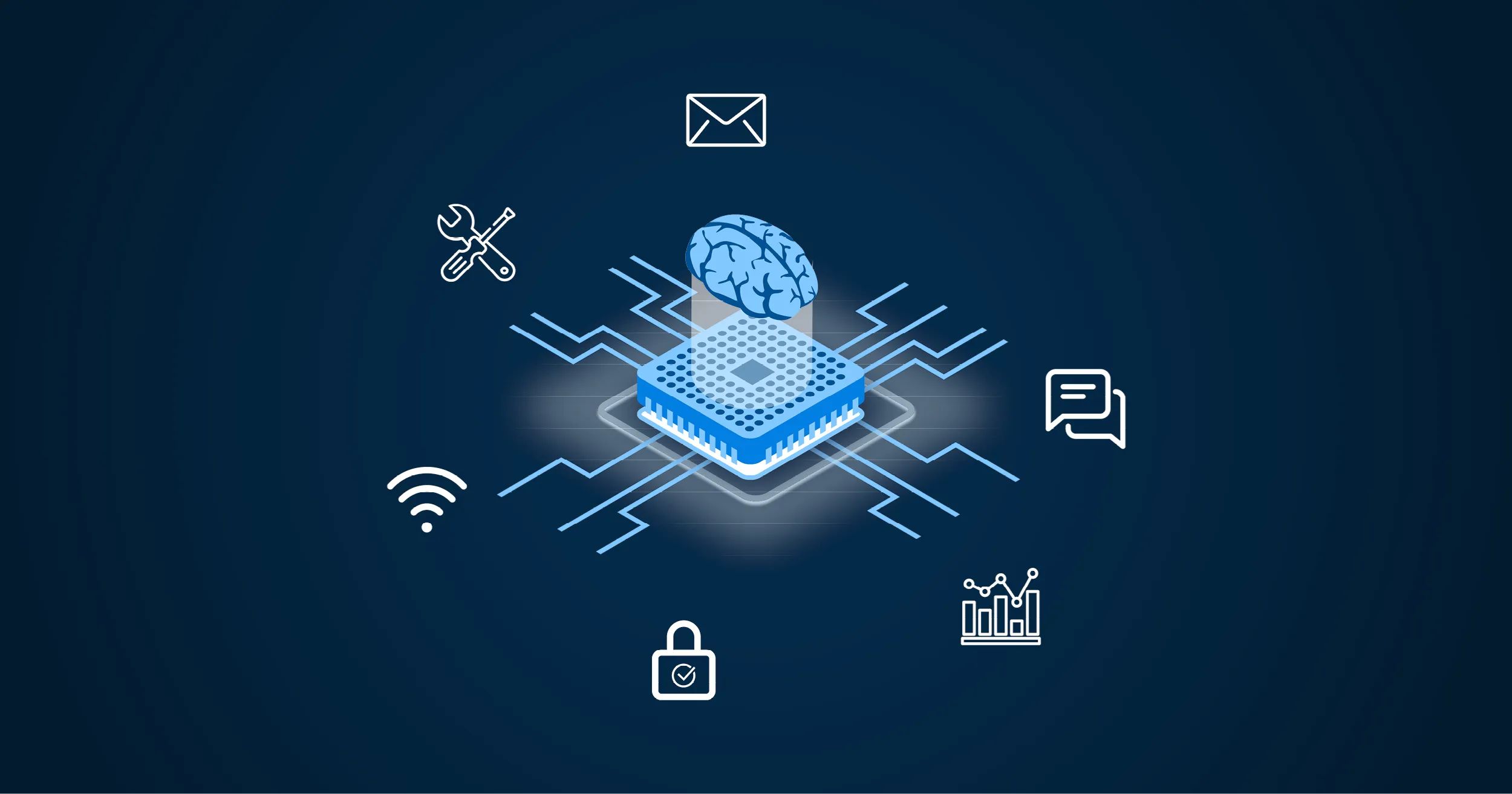Security challenges
The Internet of Things (IoT) has revolutionized the way we interact with technology, bringing connectivity and convenience to our daily lives. However, with this innovation comes a range of security challenges that need to be addressed. As IoT devices become more prevalent in homes, businesses, and public spaces, it is crucial to understand and mitigate these risks to protect sensitive data and maintain user trust.
One of the primary security challenges in the realm of IoT is the sheer number of devices and the vulnerabilities they may possess. A vast network of interconnected devices increases the potential attack surface for hackers looking to exploit weaknesses. Traditional security measures, such as firewalls and antivirus software, may not be sufficient to deal with the unique threats presented by IoT devices.
Another crucial aspect of IoT security is ensuring secure communication between devices. Many IoT devices rely on wireless communication protocols, such as Wi-Fi or Bluetooth, which can be susceptible to interception or unauthorized access. Implementing strong encryption protocols and secure authentication mechanisms is essential to prevent unauthorized users from gaining access to sensitive data or controlling connected devices.
Furthermore, the lack of standardized security protocols across different IoT platforms and devices poses a significant challenge. Each device manufacturer may have its own approach to security, leaving room for inconsistencies and potential vulnerabilities. This fragmentation makes it difficult to establish a unified security framework and complicates the task of securing IoT ecosystems.
Additionally, IoT devices often have limited computing power and memory, making it challenging to implement robust security measures. This constraint can inhibit the ability to regularly update firmware and patch security vulnerabilities, leaving devices exposed to potential attacks. Moreover, IoT devices often have a longer lifecycle than traditional computing devices, compounding the security risks over time.
Lastly, the rapid growth of IoT has resulted in a scarcity of skilled professionals who are well-versed in IoT security. Many organizations lack the necessary expertise to effectively manage security risks associated with IoT deployments. Addressing this challenge requires investing in training and education programs to develop a pool of professionals capable of handling the evolving cybersecurity landscape.
To overcome these security challenges, a multi-faceted approach is needed. This includes fostering collaboration between device manufacturers, implementing robust encryption and authentication mechanisms, establishing industry-wide security standards, and raising awareness among users about best security practices for IoT devices.
By addressing these security challenges head-on, we can ensure the continued growth and innovation of the IoT while protecting user privacy, data integrity, and system reliability.
Privacy concerns
While the Internet of Things (IoT) offers numerous benefits, it also raises significant concerns around privacy. The collection and sharing of vast amounts of data by IoT devices have sparked debates regarding individual privacy rights and the potential misuse of personal information.
One of the primary privacy concerns in the context of IoT is data collection. IoT devices gather an immense amount of data about users and their behaviors. This includes location data, browsing history, usage patterns, and even biometric information. The sheer volume of data collected raises concerns about how it is being used, stored, and potentially shared with third parties.
Furthermore, the integration of various IoT devices can lead to the creation of comprehensive digital profiles for individuals. By analyzing data from multiple sources, advertisers and other organizations can gain deep insights into consumers’ preferences, habits, and lifestyles. This level of surveillance raises concerns about the erosion of personal privacy and the potential for manipulation or discrimination based on these profiles.
The security of IoT devices also ties into privacy concerns. If these devices are not adequately protected, they can become entry points for hackers to gain access to sensitive personal information. For example, a compromised IoT camera in a home can provide unauthorized access to a user’s private space or allow for the surveillance of personal activities without consent.
In addition to data collection and security, the issue of user consent is crucial. Many IoT devices passively collect data without users explicitly granting permission or being aware of the extent of information being gathered. Lack of transparency regarding data collection practices and the potential sharing of data with third parties raises concerns about the control users have over their own information.
Legislation and regulations surrounding privacy in the IoT space are still evolving. Clear guidelines are necessary to ensure that data collection and usage by IoT devices are governed by ethical principles that respect individual privacy. Additionally, users must have the ability to understand and control how their data is used, including the option to opt out of certain data collection practices.
Addressing privacy concerns requires a collaborative effort between IoT device manufacturers, service providers, policymakers, and consumers. Device manufacturers must prioritize privacy in the design and development of their products, implementing privacy-by-design principles and providing users with granular controls over their data. Service providers need to adopt transparent data handling practices and ensure secure storage and transmission of data. Policymakers play a vital role in establishing clear privacy regulations and enforcing compliance by IoT industry stakeholders.
Ultimately, it is important to strike a balance between the benefits of IoT and individual privacy rights. By prioritizing privacy and addressing these concerns, we can ensure that the IoT remains a trusted and valuable technology, empowering individuals while respecting their right to privacy.
Interoperability issues
One of the significant challenges in the adoption and implementation of the Internet of Things (IoT) is interoperability. Interoperability refers to the ability of IoT devices and systems from different manufacturers to seamlessly communicate, exchange data, and work together. Without interoperability, the full potential of the IoT cannot be realized, leading to fragmented ecosystems and limited functionality for users.
A key driver of interoperability issues is the lack of standardized protocols and communication frameworks across IoT devices. Different manufacturers often use proprietary technologies and protocols, making it challenging for devices to communicate with one another. This lack of standardization creates silos, preventing devices from leveraging the full power of connectivity and hindering the creation of comprehensive IoT solutions.
Furthermore, there is a wide range of connectivity options available for IoT devices, including Wi-Fi, Zigbee, Bluetooth, and cellular networks. Each connectivity option primarily caters to specific use cases, such as short-range communication or low-power, long-range connectivity. The diverse range of connectivity options further exacerbates the interoperability challenge, as devices may only be compatible with specific protocols or networks.
Another aspect contributing to interoperability issues is the diverse nature of IoT devices and applications. The IoT landscape encompasses a vast array of devices, ranging from sensors and actuators to wearables and smart home devices. Each device has its unique set of capabilities, data formats, and communication requirements. Integrating and coordinating these disparate devices and applications can be complex and time-consuming.
The lack of interoperability not only hampers the seamless integration of diverse devices but also limits the scalability and flexibility of IoT deployments. As IoT ecosystems grow and expand, it becomes more challenging to manage and coordinate devices from different manufacturers. This can lead to inefficiencies, increased complexity, and decreased overall system reliability.
Addressing interoperability challenges requires industry-wide collaboration and the establishment of clear standards. Standardization efforts should focus on developing open and vendor-neutral protocols that enable secure and efficient communication between devices. Initiatives such as the Open Connectivity Foundation (OCF) and the Thread Group are working towards defining interoperability standards and frameworks for IoT devices.
In addition to standardization, the adoption of interoperability testing and certification programs can help ensure that devices meet the required interoperability standards. These programs enable device manufacturers to demonstrate compliance with established protocols and increase consumer confidence in the compatibility of IoT devices.
Ultimately, achieving interoperability in the IoT ecosystem is essential for unlocking its full potential. By addressing the challenges around standardization, connectivity, and device diversity, we can create a more connected and collaborative IoT landscape that benefits users, businesses, and society as a whole.
Scalability challenges
The scalability of the Internet of Things (IoT) is a critical consideration as the number of connected devices continues to grow exponentially. Scalability encompasses the ability of an IoT system to accommodate an increasing number of devices, handle growing data volumes, and maintain efficient performance. However, achieving seamless scalability in IoT deployments is not without its challenges.
One of the primary scalability challenges in IoT is managing the sheer volume of devices that are part of an ecosystem. As the number of connected devices increases, the system must be capable of efficiently handling the data generated by each device and facilitating communication among them. Scaling the infrastructure and network to accommodate a large number of devices while maintaining reliable connectivity can be complex and resource-intensive.
Another scalability challenge is the exponential growth of data generated by IoT devices. Each connected device generates a stream of data that needs to be collected, processed, and analyzed. As the number of devices increases, the volume of data becomes overwhelming, exceeding the capabilities of traditional data management systems. Scaling data storage and processing infrastructure becomes a necessity to ensure efficient handling and analysis of the massive influx of data.
In addition to managing device and data scalability, ensuring efficient communication and response times in large-scale IoT deployments is crucial. Communication between devices, gateways, and cloud platforms must be fast and reliable to enable real-time monitoring, control, and analysis. The sheer number of devices and the complexity of their interactions can strain network bandwidth and cause delays in data transmission, affecting the overall system performance.
Another challenge related to scalability is the interoperability of devices and systems. As the IoT ecosystem expands, integrating devices from different manufacturers and across various domains becomes more complex. Ensuring seamless communication and compatibility among different devices, protocols, and platforms at scale is essential for achieving a cohesive and functional IoT infrastructure.
Furthermore, scalability also extends to the management and maintenance of IoT deployments. As the number of devices increases, managing updates, security patches, and device configurations becomes more challenging. Scaling device management systems and processes is necessary to efficiently monitor and maintain the health and performance of the growing IoT ecosystem.
To address scalability challenges in IoT, several strategies can be implemented. Leveraging cloud computing and edge computing technologies can distribute data processing and storage, alleviating the strain on centralized systems and enabling more efficient scalability. Utilizing scalable architectures and protocols that are designed for handling large-scale IoT deployments can also enhance scalability.
Additionally, addressing interoperability and standardization challenges can facilitate more seamless scaling of IoT systems. Establishing industry-wide standards, protocols, and frameworks that enable interoperability between different devices, platforms, and domains allows for easier integration and scalability of the IoT ecosystem.
By understanding and proactively addressing scalability challenges, organizations can ensure that their IoT deployments can effectively handle the growing number of devices and data, maintain efficient communication and response times, and support the expanding needs of connected technologies.
Data management and analytics
The Internet of Things (IoT) generates an enormous volume of data from interconnected devices, providing organizations with valuable insights and opportunities for innovation. However, managing and analyzing this vast amount of data poses significant challenges for businesses looking to leverage the full potential of the IoT.
One of the key data management challenges in the IoT is data storage. IoT devices continuously generate streams of data, including sensor readings, environmental data, user interactions, and more. Storing and managing this data in a scalable and efficient manner requires robust infrastructure and storage systems that can handle the velocity, volume, and variety of IoT data.
In addition to storage, data quality and reliability are crucial aspects of data management in IoT. Ensuring that the collected data is accurate, complete, and consistent is essential for making informed decisions and extracting meaningful insights. Data cleaning, validation, and normalization processes are necessary to address data discrepancies and errors that may arise from various sources.
Moreover, the integration of data from diverse IoT devices and systems poses a significant challenge. IoT deployments often consist of devices from different manufacturers, each generating data in different formats and using distinct protocols. Harmonizing and aggregating data from these disparate sources requires data integration and transformation techniques to create a unified view of the IoT ecosystem.
Once the data is collected and stored, the challenge lies in extracting valuable insights and knowledge from it. Analytics and data mining techniques play a crucial role in uncovering trends, patterns, and actionable insights from the vast amount of IoT data. Advanced analytics algorithms, such as machine learning and artificial intelligence, can assist in identifying anomalies, predicting events, and optimizing processes.
Real-time analytics is another aspect that organizations strive to achieve in IoT deployments. The ability to process and analyze streaming data in real-time enables immediate response to critical events and the ability to make data-driven decisions in a timely manner. Implementing real-time analytics requires efficient data processing frameworks and technologies that can handle the velocity and volume of streaming IoT data.
Data security and privacy are additional considerations in IoT data management. The sensitive nature of IoT data, such as personal information or industrial processes, necessitates stringent security measures. Encryption, access controls, and data anonymization techniques are crucial to protect the privacy of individuals and organizations while ensuring the integrity and confidentiality of IoT data.
To address data management and analytics challenges in the IoT, organizations need to implement robust data management strategies. This includes investing in scalable storage infrastructure, implementing data integration and cleaning processes, leveraging advanced analytics techniques, and prioritizing data security and privacy.
Additionally, adopting cloud-based platforms and services can provide organizations with the scalability, flexibility, and processing power required for effective IoT data management and analytics. Cloud platforms offer scalable storage options, real-time data processing capabilities, and advanced analytics tools that can handle the challenges of IoT data management.
By effectively managing and analyzing IoT data, organizations can unlock valuable insights, drive data-driven decision-making, and achieve competitive advantages in their respective industries.
Power and battery constraints
The Internet of Things (IoT) relies on a vast network of connected devices, many of which are constrained by limited power sources, such as batteries. Power management is a critical challenge in the successful deployment and operation of IoT devices, as their longevity and functionality depend on efficient energy consumption.
One of the primary concerns when it comes to power and battery constraints is the need to optimize energy usage. IoT devices often operate on limited power sources, such as small batteries or energy harvesting methods. To maximize the lifespan of these devices, it is crucial to employ power-efficient designs, including low-power components, optimized software algorithms, and efficient data transmission protocols.
Another challenge is the sheer number of connected devices and the scalability of power management. As the number of IoT devices in a network increases, managing and maintaining their power sources become increasingly complex. Organizations must develop strategies to effectively monitor power consumption, identify energy-intensive devices or processes, and implement power management techniques to ensure efficient usage across the entire IoT ecosystem.
Additionally, the intermittent availability of power sources, particularly in remote or inaccessible locations, presents unique challenges for IoT devices. For devices relying on renewable energy sources like solar or wind, variations in environmental conditions can impact their power generation capabilities. To mitigate these constraints, devices may need to incorporate energy storage solutions, such as capacitors or rechargeable batteries, to ensure continuous operation even during periods of limited power availability.
Battery life is a critical factor in IoT device performance. Extended battery life enhances device functionality, reduces maintenance costs, and improves overall user experience. Designing devices with power-saving features, optimizing data transmission and processing, and implementing sleep/wake cycles are essential strategies to extend battery life in IoT devices.
Data management in the context of power and battery constraints is also important. The continuous transmission and processing of data can drain device batteries quickly. Implementing efficient data collection and aggregation mechanisms, as well as employing compression techniques, can minimize power consumption and prolong battery life.
Addressing power and battery constraints in the IoT ecosystem requires a multi-pronged approach. Device manufacturers need to prioritize energy-efficient designs, components, and software algorithms. Additionally, the development of innovative energy harvesting technologies, such as kinetic or thermal energy harvesting, can help mitigate power constraints and provide alternative power sources for IoT devices.
Efficient power management systems, such as smart power grids and energy-aware scheduling algorithms, can be implemented to optimize energy distribution and consumption in IoT deployments. Furthermore, advancements in battery technology, such as the development of long-lasting and rechargeable batteries, can significantly extend the lifespan and functionality of IoT devices.
By addressing power and battery constraints, organizations can ensure the reliable and sustainable operation of IoT devices, enhance user experience, and unlock the full potential of the IoT in various industries and applications.
Network connectivity challenges
Network connectivity is a critical component of the Internet of Things (IoT) ecosystem, enabling communication between devices, data transmission, and real-time monitoring. However, achieving reliable and seamless network connectivity in IoT deployments poses several challenges that must be addressed to ensure the smooth operation of connected devices.
One of the primary challenges is the diversity of connectivity options available for IoT devices. Different devices may use various wireless communication protocols, such as Wi-Fi, Bluetooth, Zigbee, or cellular networks. The compatibility and reliability of these connectivity options can vary, leading to potential connectivity issues and limitations in certain environments or use cases.
Furthermore, IoT devices are often deployed in diverse locations, ranging from urban areas with strong network signals to remote or underground environments with limited connectivity. Ensuring consistent network coverage, especially in these challenging environments, can be complex and require the deployment of additional infrastructure, such as signal boosters or mesh networking solutions.
Interference is another significant network connectivity challenge in the IoT ecosystem. As the number of connected devices increases, the electromagnetic spectrum becomes crowded, resulting in potential signal interference. This interference can degrade the reliability and performance of IoT devices, affecting data transmission and communication between devices.
Network security is also a crucial consideration in IoT deployments. IoT devices transmit sensitive data, and ensuring secure communication is vital to protect against unauthorized access or data breaches. Implementing robust authentication protocols, encryption mechanisms, and access controls is necessary to establish secure and trusted communication channels for IoT devices.
Scalability of network infrastructure is an additional challenge when it comes to network connectivity in the IoT ecosystem. As the number of connected devices grows, the existing network infrastructure may not be capable of handling the increased traffic and data flow. Organizations must plan for the scalability and capacity of their network infrastructure to accommodate the expanding IoT ecosystem without sacrificing performance or reliability.
Addressing network connectivity challenges requires a combination of technical solutions, industry collaboration, and infrastructure development. Standardization of communication protocols and the adoption of open, interoperable technologies can facilitate seamless connectivity between different devices and platforms. Collaborative efforts among device manufacturers, network service providers, and policymakers are crucial to establish guidelines and regulations that ensure reliable, secure, and scalable network connectivity for IoT deployments.
The deployment of edge computing can also help address network connectivity challenges by bringing data processing and analysis closer to the devices, reducing latency and minimizing reliance on cloud-based services. This approach improves real-time decision-making and enables autonomous functionality even in environments with limited network connectivity.
In summary, addressing network connectivity challenges in the IoT ecosystem requires a comprehensive approach, encompassing technology, standardization, infrastructure development, and collaboration among stakeholders. By overcoming these challenges, organizations can establish reliable, secure, and scalable network connectivity, unlocking the full potential of the IoT in various industries and applications.
Complexity and integration challenges
The Internet of Things (IoT) brings together a multitude of devices, technologies, and systems, resulting in complex and intricate ecosystems. Managing this complexity and ensuring seamless integration among diverse components are significant challenges that organizations face when deploying and operating IoT solutions.
One of the primary complexity challenges in the IoT ecosystem is the sheer diversity of devices and technologies involved. IoT deployments often include a wide range of devices, such as sensors, actuators, wearables, and smart appliances, each with its own specifications, capabilities, and communication protocols. Integrating and managing this diverse array of devices and technologies can be complex and time-consuming.
Integration challenges also arise from the need to connect IoT systems with existing IT infrastructure. Incorporating IoT into an organization’s existing IT environment may require significant modifications and enhancements to ensure compatibility and integration. Legacy systems, data management platforms, and security frameworks may need to be adapted to accommodate the unique requirements of IoT devices and systems.
Furthermore, data integration and exchange pose significant challenges in the IoT ecosystem. IoT systems generate vast amounts of data from various sources and formats. Aggregating, processing, and analyzing this data and integrating it with existing data management systems can be complicated. The integration of structured and unstructured data, real-time or near-real-time data streams, and historical data requires robust data integration techniques and platforms.
Addressing complexity and integration challenges require a comprehensive approach. Designing IoT systems with modularity and scalability in mind can simplify integration efforts. The use of standardized communication protocols and APIs facilitates interoperability and seamless integration among devices and systems.
Implementing middleware solutions that provide a common interface and data management layer can help bridge the gap between different devices and technologies, enabling streamlined integration and communication. These middleware platforms typically include features for data aggregation, transformation, and distribution, making the integration of heterogeneous IoT components more manageable.
In addition to technical solutions, organizations must also consider the human factor when addressing complexity and integration challenges. Training and educating personnel on IoT technologies and systems, as well as fostering a culture of collaboration and interdisciplinary teamwork, can mitigate complexity and enhance integration efforts.
The establishment of industry standards and best practices is also crucial in addressing complexity and integration challenges. Collaborative efforts among industry stakeholders, such as device manufacturers, technology providers, and industry associations, can drive the development and adoption of standardized protocols, interfaces, and integration frameworks.
To summarize, managing complexity and ensuring seamless integration in the IoT ecosystem require a multi-faceted approach encompassing technical solutions, human factors, and industry collaboration. By addressing these challenges, organizations can leverage the full potential of the IoT, achieve interoperability, and create connected ecosystems that drive innovation and efficiency in various industries and applications.
Ethical and legal challenges
The rapid proliferation of the Internet of Things (IoT) has raised important ethical and legal concerns that need to be addressed. As IoT devices become more integrated into our lives, it is essential to consider the potential implications and consequences, both from an ethical and a legal standpoint.
One of the primary ethical challenges of the IoT is the collection and use of personal data. IoT devices gather vast amounts of data about individuals, including their behaviors, preferences, and even biometric information. This raises concerns about privacy, consent, and the potential for misuse or unauthorized access to sensitive personal data.
Transparency is a vital ethical consideration in the IoT ecosystem. Users should have a clear understanding of the data collected by IoT devices, how it is used, and who has access to it. The lack of transparency can lead to a breach of trust between users and device manufacturers or service providers.
Another ethical challenge is the potential for bias and discrimination as a result of data collection and analysis. The data generated by IoT devices can be used to make decisions that affect individuals, such as determining insurance premiums, job prospects, or loan eligibility. If the data used for such decisions are biased or discriminatory, it can lead to unequal treatment and violation of individual rights.
Additionally, the ethical implications of security vulnerabilities in IoT devices cannot be overlooked. Poorly secured IoT devices can be exploited by malicious actors, leading to breaches of privacy, unauthorized access, or even physical harm. The responsibility lies with device manufacturers to ensure the security and privacy measures are in place to protect individuals and their data.
On the legal front, the IoT presents challenges in terms of accountability and liability. Determining who is responsible in cases of data breaches, accidents, or other harms caused by IoT devices can be complicated. Legal frameworks and regulations need to be established to assign clear responsibilities and protect the rights of individuals in the IoT ecosystem.
Intellectual property rights and data ownership are also legal challenges associated with the IoT. With the vast amount of data generated by IoT devices, issues surrounding intellectual property and ownership arise, particularly when it comes to data ownership, licensing, and sharing. Clarifying and enforcing legal frameworks that protect intellectual property and data ownership rights is necessary to ensure a fair and equitable IoT environment.
Addressing ethical and legal challenges in the IoT requires a multifaceted approach involving various stakeholders. Policymakers need to establish clear regulations and standards that protect privacy, ensure transparency, and enforce security measures. Device manufacturers should prioritize ethical design practices, security, and transparency. Users and consumers should educate themselves about their rights and make informed decisions regarding the use of IoT devices and services.
Furthermore, collaboration between industry stakeholders, academia, and civil society organizations is essential in establishing best practices, ethical guidelines, and legal frameworks that promote responsible and ethical IoT deployments.
By proactively addressing ethical and legal challenges, organizations can foster a sustainable and trustworthy IoT environment that respects individual rights, protects privacy, and promotes innovation.
Cost and investment challenges
The adoption and implementation of the Internet of Things (IoT) present significant cost and investment challenges for organizations. While the potential benefits of IoT are vast, there are various factors that organizations need to consider when planning and budgeting for IoT initiatives.
One of the primary cost challenges associated with the IoT is the upfront investment required for infrastructure development and deployment. Setting up the necessary network infrastructure, including sensors, gateways, connectivity solutions, and data storage systems, can be capital-intensive. The cost of hardware, software, and infrastructure components needs to be carefully evaluated and planned for to ensure a sustainable and viable IoT deployment.
Additionally, ongoing operational costs should be considered. IoT devices generate massive amounts of data that need to be stored, processed, and analyzed. This requires sufficient computing power, storage capacity, and computational resources, which can result in ongoing costs for data management and analytics. The scalability and scalability of these operational costs should be taken into account to avoid surprises and budgetary constraints in the long run.
Integration costs also play a significant role in the affordability of IoT projects. The IoT ecosystem often involves integration with existing IT systems, applications, and workflows. Custom development, vendor-specific integration requirements, and legacy system compatibility can add complexity and cost to IoT integration efforts. Organizations need to assess these integration costs and plan accordingly.
Furthermore, the IoT introduces maintenance and support challenges that come with costs. IoT devices require regular monitoring, software updates, and security patches. The ongoing maintenance and support of the IoT infrastructure can involve personnel costs, licensing fees, and investment in additional resources and technologies.
Another cost consideration is related to data storage and security. The proliferation of IoT devices generates vast volumes of data that need to be stored securely. Data storage costs can quickly escalate, especially as the number of devices and data generated increases. Additionally, ensuring robust security measures, such as encryption and authentication, adds to the investment required to protect sensitive data.
To mitigate cost challenges, organizations should conduct thorough cost-benefit analyses and develop comprehensive business cases for their IoT projects. This includes considering the potential return on investment (ROI), cost savings, and revenue generation opportunities that the IoT deployments can offer. Organizations also need to evaluate different deployment models, such as cloud-based solutions or utilizing existing infrastructure, to optimize costs while still achieving their IoT objectives.
Collaboration and partnership can also help alleviate cost challenges. Organizations can explore strategic partnerships with IoT solution providers, technology vendors, or service providers to share costs, pool resources, and leverage their expertise.
Additionally, organizations should explore government incentives, grants, and funding options that may be available to support IoT initiatives. Governments and industry bodies often offer financial support or tax incentives to encourage innovation in the IoT domain.
By carefully considering the cost and investment challenges, organizations can make informed decisions, allocate resources effectively, and develop a sustainable financial plan for their IoT initiatives. This allows them to fully leverage the potential of IoT while managing costs and maximizing the return on investment.









